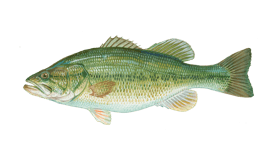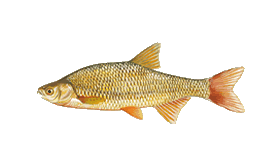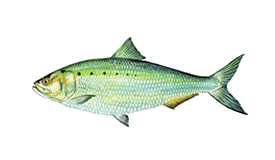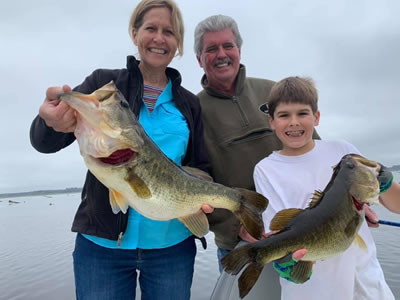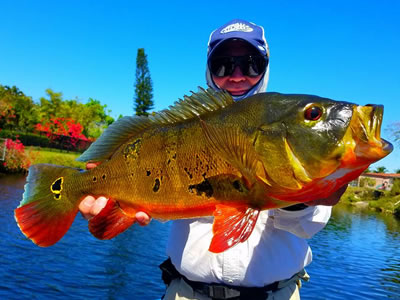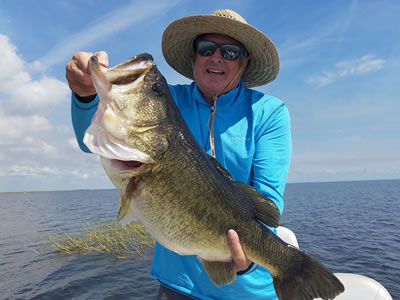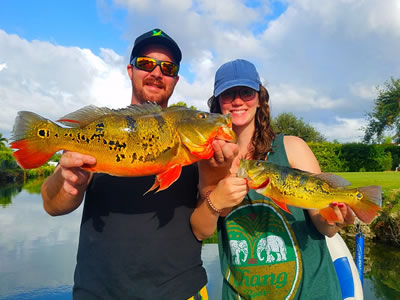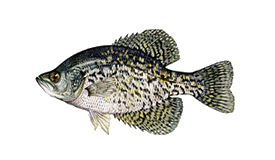BEST LIVE BAIT FOR BASS
What is the Best Live Bait Fishing for Bass?
Wild-caught live shiners or shad are the best live fishing bait for trophy largemouth bass. The golden shiner is one of the most productive and popular methods to catch big bass. Utilize the knowledge presented below and enjoy landing some of the biggest bass of your life. You can also use domestic shiners to catch a broader range of freshwater species, including peacock bass, crappie/speck, smallmouth bass, and more.
How to Properly Handle Live Fishing Bait?
Handling live bait can be very integral to the success you have on the water. Live bait, especially shiners, tend to be fragile to improper handling as well as water temperature. Temperature changes, if needed, should be made gradually from the time the shiners are placed in the livewell to the destination fished.
Aeration is another key factor in the longevity of your bait. Pump your livewell or bait bucket with plenty of oxygen throughout the whole day of fishing. Bass rarely hit bait that can’t escape from them. There may be times that they will but overall they want active bait. If your bait is dying after being in the water shortly, something may be wrong.
Take a look at the differences in temperature between the live well and the lake or pond. Make the necessary adjustments to help increase the life of your bait.
Live Bait Fishing Equipment: Tackle, Reels & Line
When fishing with live bait, using the proper equipment is essential. You want to use equipment that will match the bait size you are throwing. It can help increase the percentage of hits and fish landed.
For example, if the bait is 3 inches long, use a 4/0 hook. For shiners that are 8-10 inches long, use 5/0 or 6/0. Apply a weed guard on your hooks only when necessary in heavy cover.
When deciding what rod to use, we recommend using a 7ft heavy action rod. Rods with a soft tip also help to cast while still having the backbone to turn a trophy when needed. You can use bait casters or spinning reels to suit your fishing needs.
Spool your reels with a 20-30 pound Berkley Big Game line. Open-area lakes, including the Harris Chain, Butler Chain, and Lake Tarpon, are perfect for this line. Anglers and fishing guides also use 30-65 pound braided lines on heavy-cover fisheries, including Lake Okeechobee, Rodman Reservoir, and Lake Toho. This line size may seem overpowering, but it is about being prepared when the trophy bass strikes.
Should I use Bobbers or Balloons?
Bobbers are best and highly recommended when using live bait. Keep your bobbers as small as you can. You want them large enough to visually keep up with what the shiner is doing. Shiners that have a 2 to 4-foot depth range are best. You want to allow your live bait to swim freely.
Bobber color does not matter when it comes to effectively catching fish. We recommend you pick your favorite color. Remember, most Florida lakes and river systems are fairly stained. Visually, it will not distract the fish from their attraction towards the golden shiner.
Balloons are not an effective way to fish with shiners or live bait, especially while freshwater fishing. The balloons in most cases pop, come untied or break off. This could be harmful to the environment and the fish.
Seasonal Fishing Patterns:
Florida winter fishing patterns call for larger bait. You want the biggest wild shiners you can get. During this period, the largemouth bass spawn is in full effect. It is a time of year that provides you with the best opportunity to catch a trophy largemouth bass. Bigger bait and more robust equipment are the keys to success.
If you ask, how to catch bass in the Summer months tends to change the tactics of fishing with live bait. You can downscale and size your equipment. The size of your appeal will decrease, and feeding patterns will change to shad. Line size should also be downsized during this time. 12-15 pounds clear monofilament is an ideal line size for a strong summer bite. It will give you an edge over other anglers too!
Fishing with Wild-Caught Shiners:
We covered a lot of this in our Field & Stream article in June 2005. Free lining shiners seem to be the most popular. It’s great in running water or for trolling as well. Carolina rigging in running water will normally blow your mind, it requires constant contact with weight in order to distinguish hits. Depending on the water speed, 1 ½ oz. weight with 3′ to 4′ leaders. It also works better in deep water or high skies days when fish do not want to come up.
Our all-time favorite still has to be the drop shot rig. In most cases, you are fishing grass mats, grass lines or some kind of structure. The drop-shot rig allows you to position your bait in a specific location and not have the shiner swim out of the strike zone.
How to Hook Your Live Bait:
Live bait fishing can be done with either shiners or shad. Shiners will live longer when hooked properly. One recommended way to hook a shiner is through the bottom lip and nostril. Be careful to not go through the middle of the nostrils. The brain is located there. Don’t break the neck as well.
The hook should slide right through the nostrils with little resistance. This hooking method makes the shiner swim in a downward. Dorsal fin hooking, whether in the front or back is another great technique. This will make the bait swim upward, away from the bobber or line. More action is created but the bait will die sooner.
Each method provides control over the bait. It allows the shiners to be steered properly over, under and around vegetation. They all have their advantages given the conditions. Try each and find what works best for you at your local lake.
Bait Presentation & Casting:
Bait presentation and casting is very important to live bait fishing. The objective when casting your bait is to present it in perfect condition to the fish. sidearm casting or Underhand pitching prevents hard impact on the water, keeping all the scales intact.
What you are aiming for is a lob rather than a cast. Scales that fall off by improper casting will leave white spots on the bait that are visible underwater. Patience and concentration with your first cast can go a long way.
Don’t forget that when fishing with live bait, it’s alive. Staying patient once you properly present your bait is key to enticing a strike at the lure or bait from a trophy bass. Let that shiner sit and soak, releasing vibrations and scent in the water. If you overwork it, it will become weak, tired, and potentially die. Bass like to target prey that could get away from them!
Boat Position and Anchoring Basics
Always check wind direction! If you know where the fish are, be sure to set the boat up properly the first time around in order not to spook them. We use two methods of anchoring:
One is using conventional anchors, one on the rear with another off the bow. Have adequate rope and heavy enough anchors to hold. Scope, and more scope, the magic to getting the anchors to grab is having enough rope out. A good rule of thumb is three times the depth. Four feet deep, let out 12 ft of rope for each anchor.
The other option for anchors is to use poles instead of anchors. Yes, that’s right PVC poles, can work well for anchors. Most Florida lakes are shallow enough to use pools. They are easier to back out and generally cleaner.
When trying to determine the best boat position for bait fishing, wind direction is key. If you have located fish or know their location, try to properly set up the boat during your first try. The constant movement of your boat can alter the behavior of the fish and potentially spook them.
We recommended two methods of anchoring to get you in the right position: Firstly, conventional anchoring. An anchor in the rear and off the bow is a great way to stay locked down. Be sure to have enough rope and heavy anchors to maintain position. The magic is getting enough scope to allow the anchor to grab. Here is a great rule of thumb, 3 feet times your current depth. So for a depth of 4 feet, let out 12 feet of rope for each anchor.
Hook Setting Technique
Hook sets happen to be one of the most important aspects of fishing in general. It is even more important when live bait fishing. Most anglers wait too long to set the hook. They also set the hook too hard.
Female anglers tend to prove strength is not only necessary when setting the hook, but still is! The angle and pressure at which you set the hook will dictate whether you land the fish. Importantly, when you get a strike and the fish starts to run with the line, get ready.
You then want to begin reeling in all the slack in your line. Once you feel the fish on the other end, you then want to set the hook. You don’t want the fish to feel you beforehand, this is especially important when fishing stripers.
Keep the rod tip low while reeling in and then set the hook overhead. Maintain the pressure with your rod bent. This will keep the hook firmly in place. Enjoy the fight and reel the fish in at a constant rate!
Fishing Live Bait for Peacock Bass
The easiest way to catch peacock bass in Florida is by using the best live bait for bass or a Florida shiner. A favorite choice is a small domestic shiner about three inches in length, referred to locally as a “peacock shiner.” These can be fished in many different freshwater fishing methods, with a float or preferably free-lined. Different techniques used while on our guide trips are either casting or slow-trolling with the electric trolling motor.
Live Bait Fishing Equipment: Tackle, Rods, Reels & Line
The most common setup for peacock bass fishing is a spinning rod combo. A medium-action rod will give you the backbone you need to fight a large peacock bass. The lighter tip will also help with casting accuracy, which is very important when it comes to catching peacocks. Penn Fishing makes some excellent combos for freshwater fishing. The Penn Passion combo for female anglers is a great option. As well, the Penn Fierce III Live Liner Combo is another exceptional choice for live bait fishing.
A rod in the 6’ 6” length is the most optimal for this style of fishing. It is a favorite for all anglers that enjoy urban fishing in South Florida. A 7’ medium heavy is another very popular option as well to add length to your cast.
Most of our freshwater fishing guides use braided lines for peacock bass. A line in the 10-20 pound class range is the most effective. Berkley X9 Braided line is highly recommended by our local experts. The braided line may be more expensive but has a longer life and strength capacity. You can also reduce the diameter of your lines by using braided lines by almost 50%. This is essential when you want to fish higher test lines for strong peacock bass and use the best live bait for bass that you can find.
Water clarity is very important in your presentation as well. Depending on water clarity, we use a mono or fluorocarbon leader on the end of the braided line. This leader is usually 24” to 36” in length at 10-15 pound test in strength.
Peacock Bass Fishing Rigs for Urban Canals
Before we get started in describing the rig we use, here’s what you will need to obtain the best live bait for bass fishing tackle. You will need a 3″ slip bobber (if you prefer to use one), a bead and bobber stop, a three-way ball bearing swivel, a 2/0 or 3/0 circle hook, and a split shot lead.
To rig up the bobber, follow the following instructions. With the braid in one hand, slide a bobber stop up the line a couple of feet. Next, slide on the bead. Holding the bead in place slide the bobber up the line going threw the center holes allowing it to slide freely up and down the line. Next, tie the swivel onto the end of the braid holding on to the bobber. Now, take a 24″ piece of 10lb mono fishing line and tie it to the other end of the swivel. On the other end of the mono, tie the 2/0 circle hook.
The idea of using a bobber with a bobber stop is that it allows you quickly to adjust for different depths of water by simply sliding it up and down the line.
The alternative and more popular way to fish Florida shiners for peacock bass is the free line. Use the same line list above, tie the mono right to the braid, and just add your hook on the bottom. The only adjustment is adding a split shot of lead 10′ to 12″ above the hook. The most important part of this rig is to adjust the weight depending on the depth of water and how slow you want the bait to sink.
Top Live Bait Fishing Destinations:
Additional Targeted Best Live Bait for Bass Fish Species

